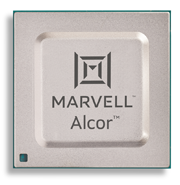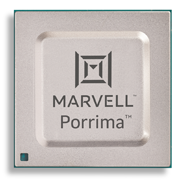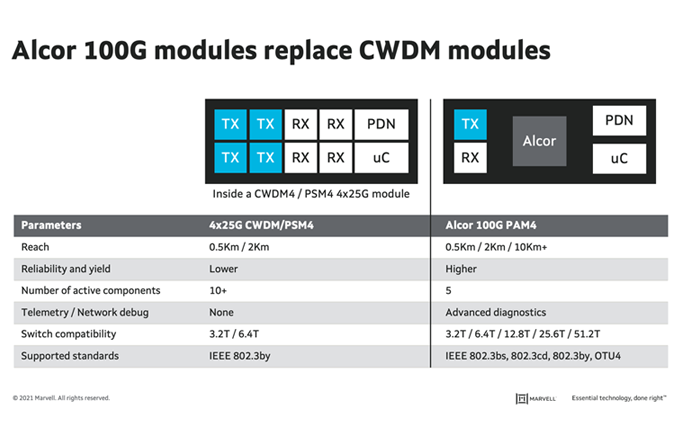- PRODUCTS
- COMPANY
- SUPPORT
- PRODUCTS
- BY TYPE
- BY MARKET
- COMPANY
- SUPPORT
Why the 100G Optical Module Transformation is Full Steam Ahead
When the London Underground opened its first line in 1863, a group of doubtful dignitaries boarded a lurching, smoke-belching train for history’s inaugural subway ride. The next day, thirty thousand curious Londoners flooded the nascent system, and within a year, more than nine million had embraced its use. Nearly 160 years later, that original tunnel is still in daily use, joining 250 miles of track that carry more than 1.3 billion passengers annually.
What were the keys to such extraordinary growth? Not just popular demand for more tunnels, but also better use of accumulated infrastructure – optimized through newer trains, enhanced signaling, greater energy efficiency, and smarter scheduling. In a sense, the Tube’s transformation mirrors the fundamental challenge now confronting modern data centers: how to make better use of existing infrastructure to handle today’s exponential growth of data.
PAM4 DSP Technology is Fast and Flexible
To keep up with the surging data demands of new video and AI workloads, modern data centers can’t simply add more and bigger pipes – at least not cost-effectively. They need PAM4 based optical module solutions to effectively and efficiently move more bandwidth at higher speeds. In addition,
they need to be able to update the optical modules via software, optimizing existing infrastructure at an affordable price.
Marvell’s industry leading Porrima™ 100G PAM4 DSPs, which were added to its networking portfolio through the recent Inphi acquisition, transmits 100G data on a single wavelength. The Porrima 100G DSP platform has been in production since 2019 and is the industry’s best-selling solution. Based on PAM4 technology, the Porrima DSP reduces the number of optical components from eight to two in a QSFP28 module. By reducing the number of optical components, the BOM cost of the module is significantly lowered and overall reliability improved. This in turn makes it more attractive for data centers to pursue higher data rates of connectivity at scale. Notably, 100G PAM4 is also the building block for future connectivity rates, including 400G, 800G and 1.6T. This helps administrators future-proof their investment, by enhancing performance and maintaining flexibility. Marvell’s Porrima 100G DSP based module has been in service in the field since 2020.
Marvell’s DSP Based 100G Solution Consolidates the Market
Given the success with the first generation single wavelength 100G module enabled by Porrima, today’s 100G market is still fragmented. Many data centers use 4x25G modules to carry 100G ethernet traffic or 25GE traffic. Due to the variance in optical reach, some competing modules require different kinds of Forward Error Corrections (FECs) on the switch, which in turn requires network administrators to keep track of all these differences within the same QSFP28 modules.
Not only does this complicate network deployment and troubleshooting, it also requires developing distinct assembly lines – introducing more cost and complexity into the supply chain while hurting network efficiency. The design of Marvell’s Alcor™ PAM4 DSP overcomes these challenges through innovation, not brute strength.
 Based on the market-leading Porrima™ PAM4 DSP platform, the new Alcor PAM4 DSP platform includes Marvell’s field proven PAM4 DSP technology, linear TIA and driver to provide even higher levels of integration and lower power for high-performance hyperscale data centers, cloud computing and emerging AI applications. Alcor, now in production, is an ultra-low power 100G PAM4 DSP that works for all the different use cases of the QSFP28 module. Alcor also supports multiplexing independent 25GE traffic on a single 100G wavelength, as well as standard 100GE traffic. This allows users to interoperate between 3.2T or 6.4T switches and the newer 12.8T and beyond switches.
Based on the market-leading Porrima™ PAM4 DSP platform, the new Alcor PAM4 DSP platform includes Marvell’s field proven PAM4 DSP technology, linear TIA and driver to provide even higher levels of integration and lower power for high-performance hyperscale data centers, cloud computing and emerging AI applications. Alcor, now in production, is an ultra-low power 100G PAM4 DSP that works for all the different use cases of the QSFP28 module. Alcor also supports multiplexing independent 25GE traffic on a single 100G wavelength, as well as standard 100GE traffic. This allows users to interoperate between 3.2T or 6.4T switches and the newer 12.8T and beyond switches.
The foundation of Marvell’s Alcor platform is a highly configurable Digital Signal Processor (DSP) engine that is field proven and qualified in multiple hyperscale data center networks. The DSP is optimized to enable optical interconnect solutions for distances between 500 meters to 2km, while keeping an extremely low power profile. Alcor’s enhanced feature set also provides optical network operators with advanced telemetry features for networking diagnostics and anomaly detection. Moreover, the integrated high-performance linear drivers eliminate the need for standalone components, thereby reducing system cost, complexity and time to market.
As noted, each feature needs to be controlled through software APIs, not hardware. So, with Alcor’s enhanced software suite, a simple flip of a switch enables QSFP28 optical modules to be repurposed to any of the 100G applications. This improves network management, makes the optical module supply chain more efficient, and reduces long-term costs for OEMs, telecom companies, base station producers, and data center managers – an attractive prospect as they begin thinking about future 400G/800G upgrades, which are not too far over the horizon.
In short, Marvell’s innovative solution empowers customers to optimize the use of existing data infrastructure, even as that infrastructure continues to evolve and data loads increase. Because just as the London Underground added 400 million riders in recent decades without adding any new tunnels, today’s data engineers can add tremendous speed and bandwidth, just by making smarter, more innovative use of existing infrastructure.
Tags: 100G DSP platform, 100G Optical Module Transformation, Digital Signal Processor, hyperscale data center networks, Optical Module, PAM4, PAM4 based optical module, PAM4 DSP platform, PAM4 DSP Technology
Recent Posts
- Marvell Wins LEAP Award for 1.6T LPO Optical Chipset
- Co-packaged Optics: Powering the Next Wave of AI Data Center Innovation
- AI Scale Up Goes for Distance with 9-meter 800G AEC from Infraeo and Marvell
- Faster, Farther and Going Optical: How PCIe Is Accelerating the AI Revolution
- Marvell Wins Leading EDGE Award for Ara 1.6T Optical DSP
Archives
Categories
- 5G (10)
- AI (42)
- Cloud (17)
- Coherent DSP (11)
- Company News (102)
- Custom Silicon Solutions (8)
- Data Center (65)
- Data Processing Units (21)
- Enterprise (24)
- ESG (10)
- Ethernet Adapters and Controllers (11)
- Ethernet PHYs (3)
- Ethernet Switching (41)
- Fibre Channel (10)
- Marvell Government Solutions (2)
- Networking (42)
- Optical Modules (18)
- Security (6)
- Server Connectivity (32)
- SSD Controllers (5)
- Storage (22)
- Storage Accelerators (2)
- What Makes Marvell (45)
Copyright © 2026 Marvell, All rights reserved.
- Terms of Use
- Privacy Policy
- Contact



